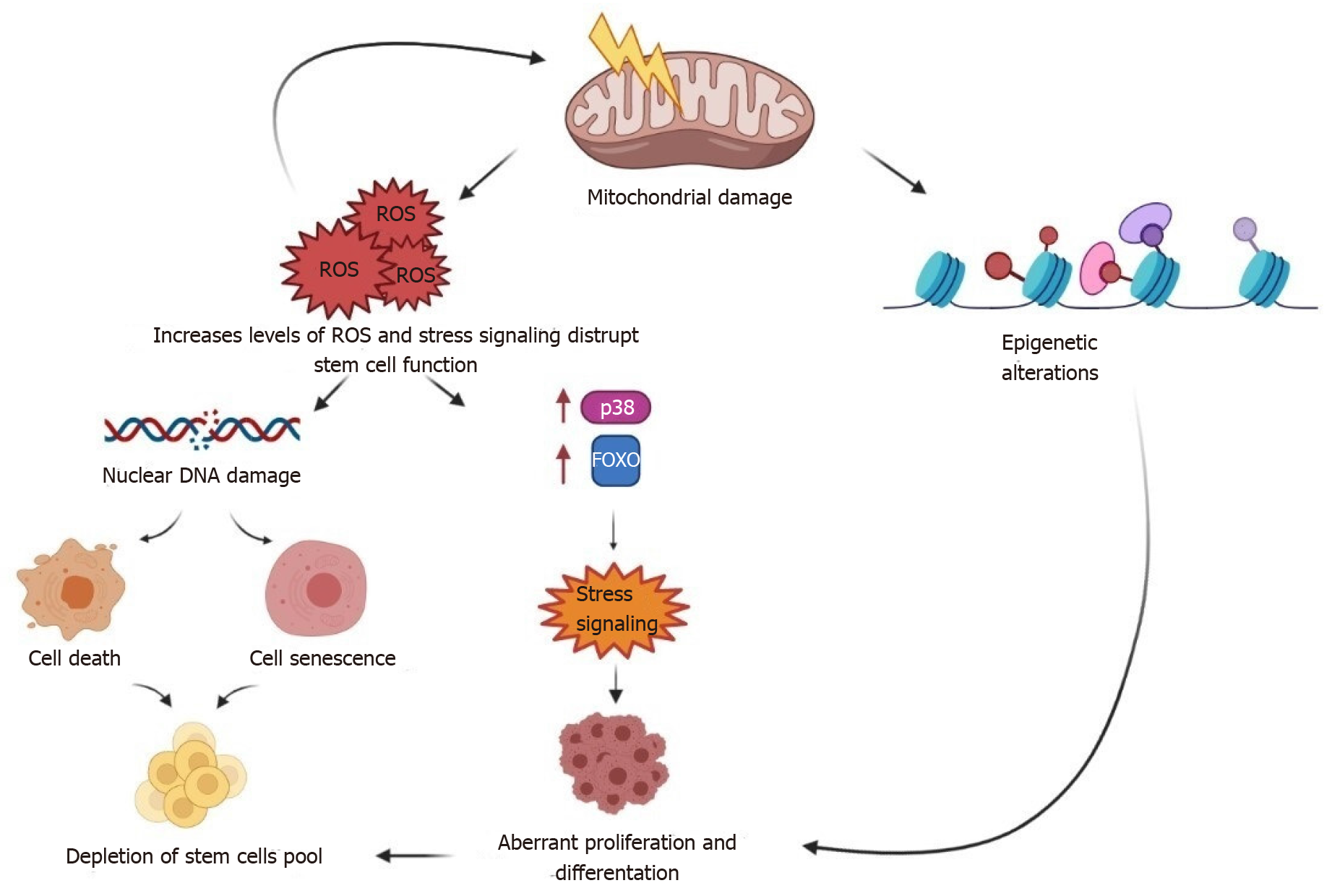Copyright
©The Author(s) 2021.
World J Stem Cells. Nov 26, 2021; 13(11): 1714-1732
Published online Nov 26, 2021. doi: 10.4252/wjsc.v13.i11.1714
Published online Nov 26, 2021. doi: 10.4252/wjsc.v13.i11.1714
Figure 2 Molecular damage in stem cells as they age.
Cell-intrinsic changes in stem cells as they age are intricately linked. In aging cells, mechanisms that would normally ensure the clearance of damaged proteins (autophagy and proteasome-mediated degradation) work badly and cause the accumulation of toxicity and toxic protein aggregates. Excessive reactive oxygen species (ROS) are released by damaged mitochondria, causing further mitochondrial harm (including mitochondrial DNA damage). ROS accumulation causes nuclear DNA damage in aged stem cells, which is aggravated by DNA replication errors and defective DNA repair, leading to cell senescence and apoptosis. Although moderate production of ROS and other stresses are necessary for the regulation of stem cell proliferation and differentiation in normal physiology (at a young age), high levels of ROS trigger stress mediators (p38 and forkhead box protein, resulting in abnormal stem cell function. As a result, stem cell reserves are depleted, and self-renewal is impaired. ROS: Reactive oxygen species.
- Citation: Picerno A, Stasi A, Franzin R, Curci C, di Bari I, Gesualdo L, Sallustio F. Why stem/progenitor cells lose their regenerative potential. World J Stem Cells 2021; 13(11): 1714-1732
- URL: https://www.wjgnet.com/1948-0210/full/v13/i11/1714.htm
- DOI: https://dx.doi.org/10.4252/wjsc.v13.i11.1714









